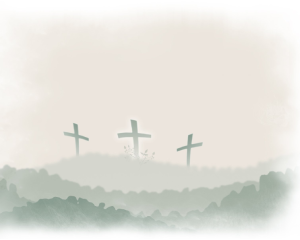Blog
Hope’s Pathway

Hope’s Pathway
Curt Richter performed an experiment in the 1950’s that used two groups of rats called the “Drowning Rat Experiment.” By today’s standards it would be considered gruesome.
He placed a domesticated rat into a half full water jar. He would time the event to see how long the rats would attempt swim and stay alive. The first rats drowned within two minutes. He repeated the experiment with the next two rats. They drowned within the same time, but the remaining nine did not succumb to their circumstances and swam for days.
The wild rats being placed in the jar would swim on the surface looking for a way out then submerge and search for a way out at the bottom. Not finding a solution, the wild rat gave up and drowned within minutes. These fierce and aggressive rats known for their swimming ability, gave up fast and drowned.
Richter added a variation to the experiment; he placed a domestic rat in the jar and let the rat swim for a few minutes then took the rat out and held them in his hand and then placed the rat back into the jar. The brief interlude made the difference, those rats lasted longer in the jar than those that were left alone.
Richter’s analysis: “The situation of these rats scarcely seems one demanding fight or flight — it is rather one of hopelessness,” he wrote. “[T]he rats are in a situation against which they have no defense… they seem literally to ‘give up.’” Holding the rats in his hand gave those rats hope.
In 1784, Ben Franklin headed a commission to France to investigate the mysterious power of Mesmerism; named after Dr. Franz Mesmer. He believed that there was an invisible force possessed by all living/animate beings. Franklin noted, “Hope is an essential constituent of human life,” he was looking further to prove his hypothesis.
As a side note: Mesmerism, also called, Magnetism ended up going through several iterations before it became obsolete and morphed into something that scientist considered spiritualism.
Every rat experiment gives clues to human behavior only because both are living and animated. It is obvious that humans are far more complex than rats, but behavior similarities are fascinating.
Richter stated, “After the elimination of hopelessness, the rats did not die.” The same is true for humans.
Hope is the element that keeps us alive. Hope imbues us with the feeling that makes life worth living.
Three medical journal entries were submitted in 2002, 2003 & 2012 by Li. J and Fang. T, respectively. Li’s papers studied the effect on parents who lost a child and Fang on the effect of cancer diagnosis.
In both cases, parents and cancer patients tended to “give up,” losing the will to live.
Can a human being die of a broken heart? According to cardiologist, Dr. Wittstein, the answer is YES.
Once people come to believe, for whatever reason, that life is no longer worth living, that belief tends to become self-fulfilling.
A parallel study in Denmark found a link to despondency and death. Heart attacks and strokes were the means that brought about their end.
The darker the future looks, the greater the risk of cardiac death.
Martin Seligman, the father of positive psychology, introduced the concept of “explanatory styles.” The way an individual explains their circumstance to themselves creates an environment that affects their perception of that situation. Optimism and Pessimism play out their effect on one’s perceptions.
Today is Easter, the Christian world is celebrating the hope that God has promised. The hope that we are not alone and that our struggles have a purpose to make us better. Though the world has repeatedly rejected the thought of a Savior, as someone or thing ruling over them. They simultaneously reject the greatest gift offered to humans, that is HOPE.
Having a purpose in life is vital for us to go forward. Someone struggling with their purpose has a difficult challenge ahead of them. Doing it alone is a dim prospect and a lonely one.
I once heard; “A man can live a week or so without food, a few days without water, a few minutes without air, but there is no live without hope.”
Understanding that finding hope and purpose are major constituents of well-being. It is fascinating that people reject the most precious source available for hope.
Attila B. Horvath, author.


![From Broken Dreams To Building A Lasting Legacy
[fiction] From Broken Dreams To Building A Lasting Legacy](https://attilahorvath.net/wp-content/uploads/2024/12/24121315332812053.jpg)


